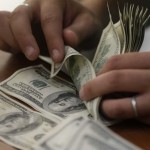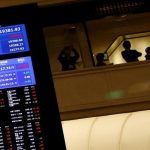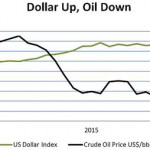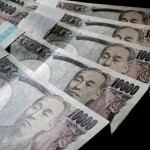Dollar flags vs euro and yen, commodities and Fed in focus

Fed meeting eyed to shore up sagging dollar
* Impact from lower commodities also remains in focus
* Aussie struggles near 6-year lows while kiwi fares better (Adds details, quotes)
The dollar flagged against the euro and yen on Monday after a drop in U.S. shares and bond yields dimmed its allure, with markets focused on whether the upcoming Federal Reserve policy meeting can shore up the greenback.
The euro rose 0.2 percent to $1.1000, having gained about 1.4 percent last week.
The euro has lost as much as 5 percent against the dollar since mid-June on Greek debt worries and the divergence of U.S. and European monetary policies, but a technical correction to the dollar’s rally gave the euro a breather last week.
The dollar faced a similar predicament against the yen, having surged to a six-week high of 124.48 early last week only to retrace its advance. It was last down 0.2 percent at 123.56 after plumbing a near two-week low of 123.49.
Aside from the Fed, focus remained on sliding commodity prices an their potential impact on currencies.
The more obvious impact from lower commodity prices has been felt by currencies of commodity exporters such as Canada, Australia and Norway. But commodity-importer currencies such as the yen were also expected to feel the effect.
“A drop in commodities generates images of a cooling global economy, which in turn leads to ‘risk off’ that could prompt short-covering of the yen,” said Masafumi Yamamoto, a senior strategist at Monex in Tokyo.
“Moreover, cheaper oil lessens import costs and improves Japan’s trade balance. If it ends up boasting a sizeable current account surplus, Japan could face criticism that the yen is too weak,” he said.
U.S. crude traded near four-month lows on Monday, dogged by concerns over oversupply and potentially weaker demand from major consumers like China.
Marc Chandler, global head of currency strategy at Brown Brothers Harriman, reckoned the dollar also looked vulnerable against the yen amid wariness towards verbal warnings against further yen depreciation by Japanese officials.
“The pullback in U.S. stocks and the decline in bond yields may encourage short-term traders to push the dollar lower. Still, ahead of the FOMC meeting support in 122.90-123.10 yen may limit the selling,” he wrote.
The market will watch the July 28-29 Fed meeting to see if policymakers provide clues for the timing of a rate “lift-off.” Steadily rising expectations the U.S. central bank could begin hiking interest rates as early as September have been a key factor behind the dollar’s gains over the past month.
The Australian dollar struggled near six-year lows versus the dollar, faced with the prospect of its central bank taking the opposite step and easing further.
The Aussie, already feeling the heat from lower commodity prices, declined further late last week on weak factory data from China, Australia’s main trading partner.
The Aussie stood just above Friday’s trough of $0.7260, its lowest since May 2009.
The New Zealand dollar fared a little better, climbing 0.3 percent to $0.6599 to extend the distance between the six-year low of $0.6498 struck mid-month. The kiwi was helped last week when the Reserve Bank of New Zealand eased its cash rate by less than some had anticipated.
Source: Reuters – Dollar flags vs euro and yen, commodities and Fed in focus





























